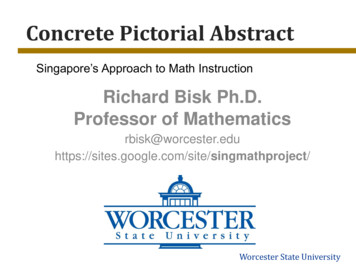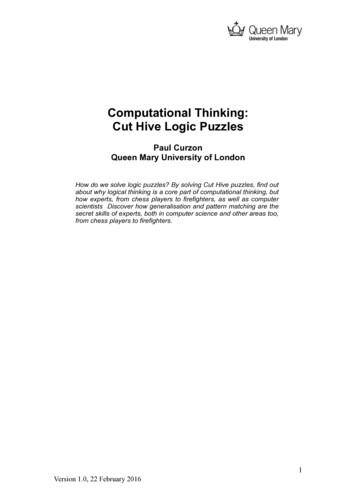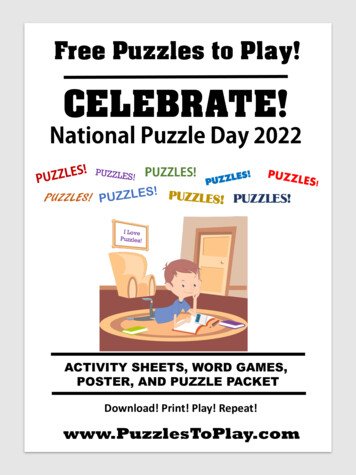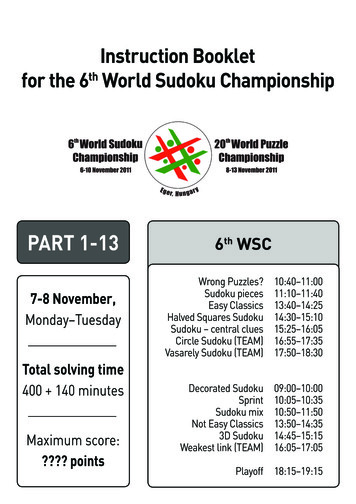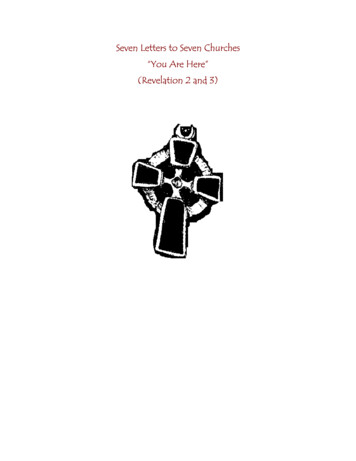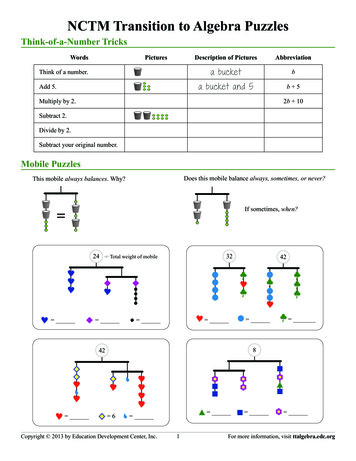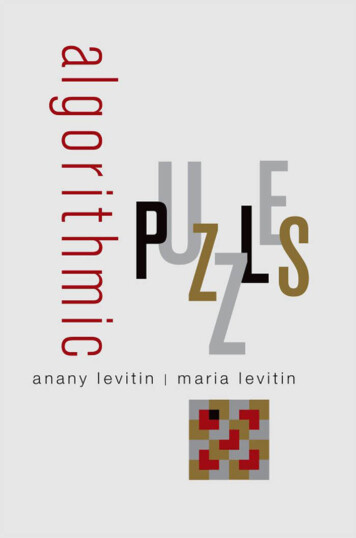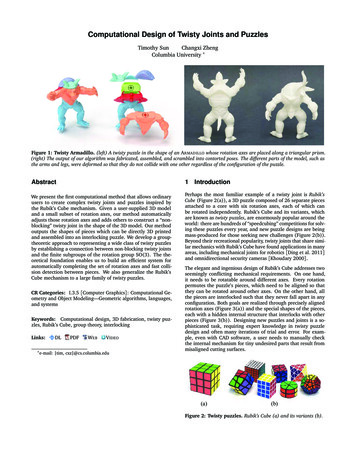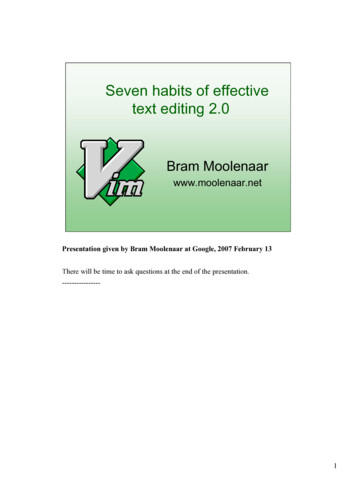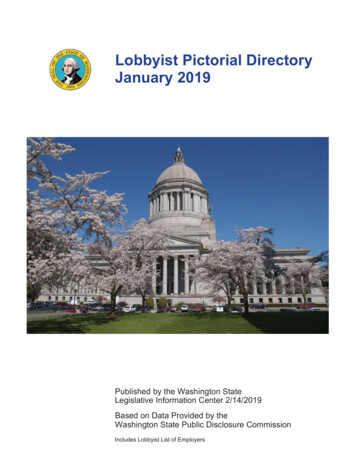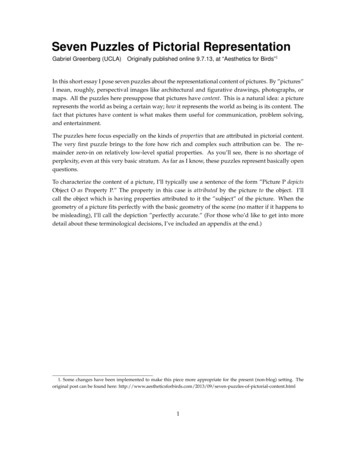
Transcription
Seven Puzzles of Pictorial RepresentationGabriel Greenberg (UCLA)Originally published online 9.7.13, at “Aesthetics for Birds”1In this short essay I pose seven puzzles about the representational content of pictures. By ”pictures”I mean, roughly, perspectival images like architectural and figurative drawings, photographs, ormaps. All the puzzles here presuppose that pictures have content. This is a natural idea: a picturerepresents the world as being a certain way; how it represents the world as being is its content. Thefact that pictures have content is what makes them useful for communication, problem solving,and entertainment.The puzzles here focus especially on the kinds of properties that are attributed in pictorial content.The very first puzzle brings to the fore how rich and complex such attribution can be. The remainder zero-in on relatively low-level spatial properties. As you’ll see, there is no shortage ofperplexity, even at this very basic stratum. As far as I know, these puzzles represent basically openquestions.To characterize the content of a picture, I’ll typically use a sentence of the form ”Picture P depictsObject O as Property P.” The property in this case is attributed by the picture to the object. I’llcall the object which is having properties attributed to it the ”subject” of the picture. When thegeometry of a picture fits perfectly with the basic geometry of the scene (no matter if it happens tobe misleading), I’ll call the depiction ”perfectly accurate.” (For those who’d like to get into moredetail about these terminological decisions, I’ve included an appendix at the end.)1. Some changes have been implemented to make this piece more appropriate for the present (non-blog) setting. Theoriginal post can be found here: zzles-of-pictorial-content.html1
1The Portrait of Lady GagaContext. Here is a fan-art portrait of Lady Gaga. For the sake of argument, let’s suppose it wasdrawn from life.2Puzzle. Does this portrait of Lady Gaga depict her as. having nose, eyes, and mouth?having lungs?having feet?being a person?sitting for a portrait?being a musician?having sung the song ”Telephone”?having sung the song ”Pokerface”?2. Drawing by Vania, html2
2Two Views of a CubeContext. I’ve got a favorite cube. You can see it here.I put the cube on my desk and then make two perfectly accurate line drawings of it, from two different views. The first view is from an angle off one corner of the cube. From this view I producedpicture A. The second view is from directly overhead. From this view I produce picture B.ABPuzzle. It’s natural to think of picture A as depicting its subject as being cube-shaped. But doespicture B depict its subject as being cube-shaped? If no, then what grounds the difference in contentbetween the two pictures? If yes, then I invite you to the next puzzle.3
3The Cube and the Rectangular BoxContext. I’ve got a favorite cube and a favorite rectangular box. Here they are:Now, I place my favorite cube before me, and assume a viewpoint directly across from it. I proceedto make a line drawing of the cube, without any of the background included. I produce picture C.Later on, I place my favorite rectangular box before me, and assume a viewpoint directly acrossfrom one of its short faces. Now I make a line drawing of the box, again without any of the background included. I produce picture D. Both drawings are perfectly accurate from their respectiveviewpoints. As it happens, the two pictures are type-identical.CDPuzzle. Does picture C depict its subject as being cube-shaped? Does picture D depict its subject asbeing rectangular-box-shaped? If the answer to both questions is yes, what grounds the difference incontent between the two pictures? If the answer to both questions is no, then what properties dothese pictures attribute to their subjects?4
4The Ames RoomContext. An Ames Room is a room with bizarre geometry, carefully designed so that, when viewedfrom a standard viewing position, it appears to have the rectilinear geometry of a normal room. Thediagram below illustrates (pretty crudely) the difference between a normal rectilinear room and anAmes room.viewing positionviewing positionRectilinear RoomAmes RoomWhile walking down a hallway in strange building, I peer through a tiny peep-hole in a door. Inside I see a room. The room appears to have the geometry of a rectilinear room, and this is whatI come to believe. I draw what I see, producing picture E below. In fact, unbeknownst to me, theroom is an Ames room, and I am looking at it from the standard viewing position.EPuzzle. Does picture E depict its subject as having Ames geometry? or as having rectilinear geometry?or does it attribute some other geometry to the room?5
5Two RoomsContext. One day I knowingly visit my local Ames Room, and draw it from the standard viewingposition. I produce picture F. Picture F is perfectly accurate, given the viewpoint. The next day Iknowingly visit my local Normal Room, which has rectilinear geometry, and draw it from someviewpoint. I produce picture G. Picture G is perfectly accurate, given the viewpoint. As it happens,the two pictures are type-identical.FGPuzzle. Does picture F depict its subject as having Ames geometry? Does picture G depict its subjectas having rectilinear geometry? If the answer to both questions is yes, what grounds the difference incontent between the two pictures? If the answer to both questions is no, then what properties dothese pictures attribute to their subjects?6
6Unsteady HandsContext. I have occasionally unsteady hands. I set out to draw my favorite cube perfectly accurately, and do pretty well, but mistakenly add one superfluous curve to an otherwise accuratedrawing.HPuzzle. What is the precise spatial content of my picture H? Assuming it does not depict its subjectas simply being cube-shaped, then. Does it depict it as having a flat front face that protrudes above itstop corners (pictured at left below)? Or as having an indented front faces that does not protrude (picturedat right below)? Or something else?Profile 1Profile 27
7The Absent CubeContext. I sit down at my empty desk, pop some acid, and soon hallucinate a perfect but unfamiliarcube sitting on the desk before me. I proceed to create the drawing J below, which I believe perfectlyaccurately depicts the situation before me. (Alternatively: I draw the surface of my desk frommemory, not life. I have a false memory that there was a cube on the desk. I believe my drawingaccurately depicts the situation I remember.)JPuzzle. Does picture J depict my desk as having a cube sitting on it? Yes is the natural answer, butwhy? If it is because of the artist’s beliefs or intentions, did you also give artist’s beliefs or intentionsprimacy in Puzzles 4, 5, and 6?8
Addendum on TerminologyIt can be useful to standardize the way we talk and think about pictorial content, especially sinceusing language to describe pictorial content can be an awkward fit.We can divide pictorial content into pictorial reference and pictorial attribution. What a picturerefers to are the things that the picture is of or about. What properties a picture represents its referentsas instantiating is what it attributes. This distinction is reflected in the common ”depiction as”formulation for describing pictorial content. I use the formulation in sentences such as these:1. The picture depicts Ponyo as walking across the street.2. The picture depicts the president as waving her hand.3. The picture depicts the cube as being a cube.All of these have the format[picture] depicts [object] as [property]where the thing denoted by the term in the [object] position is a referent of the picture, and thething denoted by the term in the [property] position is a property attributed by the picture to itsreferent. No single ”depicts as” sentence, at least none of readable length, will capture the entirecontent of a picture. Each such sentence offers only a partial characterization of a picture’s content.Any singular term can fill the [object] position, such as a name in (1) above, or definite descriptionin (2) and (3). As I choose to fix things, I’ll never take a definition description in the [object] positionto express what properties the picture itself is attributing. (Natural language may be less rigid inthis regard.) Thus (2) above does not characterize the picture’s content as attributing the propertybeing the president. For the same reason (3) is not a triviality.A picture may have many referents. To avoid the philosophical burdens of the term ”reference,” Icall the referents of a picture its “subjects.” When one such subject is especially salient, I call this“the subject” of the picture.9
represents the world as being a certain way; how it represents the world as being is its content. The fact that pictures have content is what makes them useful for communication, problem solving, and entertainment. The puzzles here focus especially on the kind
